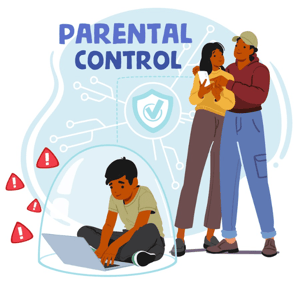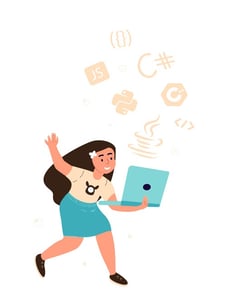Teaching coding for kids generally involves a few things: a computer or device capable of programming, a scriptwriter or coding platform, an instructor, and a coding language. A lot of educational websites and coding games for kids provide the last two or three items—students simply need to access them using their devices.
But what about resources for students who prefer to learn by reading books?
We’ve curated the top 15 coding books for kids. Check out our picks below!

Table of Contents
1. Scratch Coding for Beginners: by David Dodge, Marshall Cannon and Matt Stinson
Suggested Age Range: 6 – 12 years old
Full disclosure – this book was written by the CodaKid team. Created by a team of kids coding educators whose kids coding academy has taught over 100,000 kids how to code since 2014, the book is perfect for absolute beginners to Scratch.
Projects begin with the very basics and ramp up slowly through a number of fun and creative activities. One of our favorite things about the book is that it provides QR codes that link to helpful explainer videos that cover coding concepts such as conditionals, loops, variables, functions, and more.
The book and the CodaKid approach to teaching is fun and creative, and provides a number of extension activities that encourage students to use their knowledge to “mod” their projects.
2. The Official ScratchJr Book: Help Your Kids Learn to Code by Marina Umaschi Bers and Mitchel Resnick
Suggested Age Range: 4 – 7 years old
Scratch is a free drag-and-drop, a block-based computer programming language from MIT that’s primarily targeted at students aged 8 to 16. Its use of high-level visual elements and its intuitive, user-friendly interface makes it one of the best languages to teach coding for kids.
Recommended Reading:
For kids aged 7 and below, MIT released ScratchJr—an introductory language to the original Scratch platform meant to help younger children learn the basics of computer programming. With time, practice, and plenty of proper instruction, kids as young as 5 years old can generate their own interactive stories, animations, and dynamic games.
The Official ScratchJr Book is among several coding books for kids designed to be the perfect companion to the ScratchJr app. It’s full of hands-on activities and supplementary lessons to help kids fully master the language. Each project is broken down into small, simple steps that are easy to follow.
The contents are divided into several chapters, and each chapter has several small assignments that culminate into one fun final project. Kids will develop soft skills such as computational thinking, problem-solving, and design.
The book, when paired with the ScratchJr app, guarantees that even kids with zero coding experience and knowledge will be able to program fully functional content.

3. Hello Ruby: Adventures in Coding by Linda Liukas
Suggested Age Range: 4 – 6 years old
Another of our favorite coding books for kids is Hello Ruby: Adventures in Coding by Linda Liukas. For parents who want to introduce their younger children to coding but don’t want to plop them in front of a screen yet, Hello Ruby is an excellent choice. It’s an incredibly detailed and incredibly engaging kids’ guide to coding that doesn’t require any sort of computer, tablet, or device. The book comes with its own set of activities and worksheets that your child can finish using pencils or pens.
What we love is that it uses a mix of illustrated storytelling and hands-on activities to keep kids engaged as Ruby, the titular character, introduces them to the different concepts of coding. It’s just like reading a regular adventure or fairy tale picture book. It even uses simple, easy-to-understand language to avoid overwhelming the readers.
The Hello Ruby assignments are also designed to encourage creative thinking, problem-solving, and comprehensive understanding. Programming foundations are written and explained in a way that’s aptly descriptive without becoming too detailed.
For the age range it’s aimed at, Liukas’s Hello Ruby book (which is now the first part of a three-book set!) strikes a near-perfect balance.
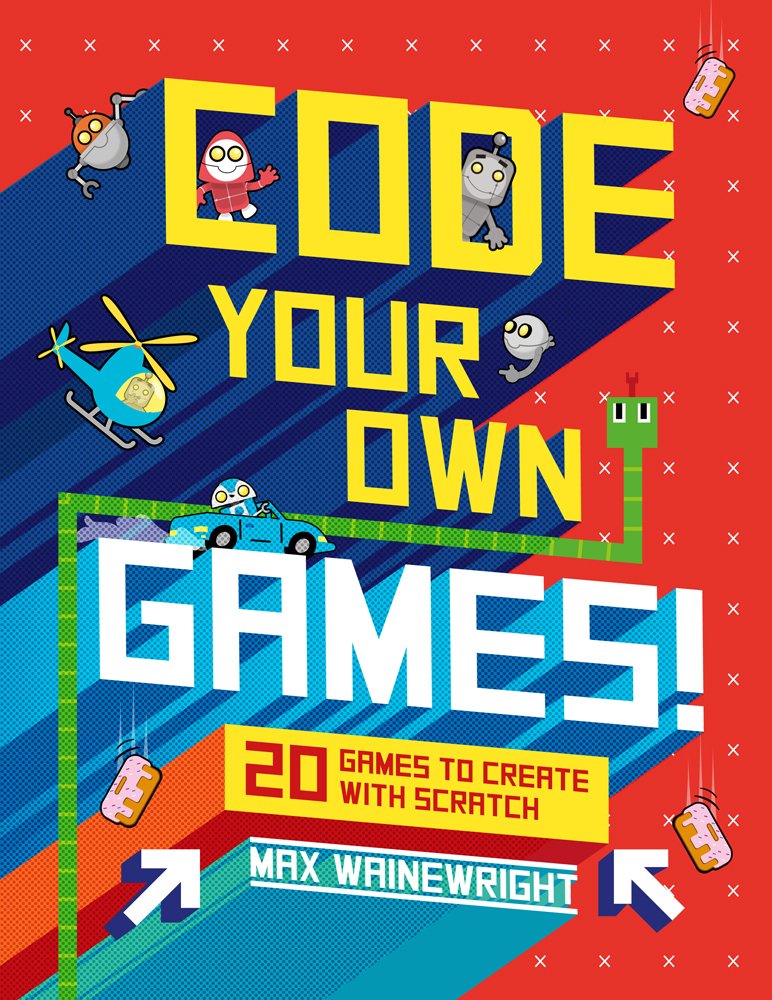
4. Code Your Own Games!: 20 Games to Create with Scratch by Max Wainewright
Recommended Age Range: 6 – 11 years old
For all creative young coders out there, this fully illustrated programming guide provides instructions for 20 Scratch game projects—all divided into five progressive levels. Each game focuses on applying and developing a specific programming concept, like animating objects, controlling player interaction, and adding audio elements.
Alongside key concepts and coding basics, Code Your Own Games! is filled with helpful tips and step-by-step instructions that will let kids (as the title suggests) code their own games.
At the end of the 20 projects, your kid will have been able to code their own versions of popular games like Snake and Brick Bouncer. And if they still want more coding challenges, author Max Wainewright has included a glossary at the end of the book to serve as a reference for more Scratch projects and/or game ideas.
This is one of our favorite Scratch coding books for kids at the time of this writing.
5. Coding Projects in Python: A Step-by-Step Visual Guide to Creating Your Own Python Projects by DK
Recommended Age Range: 9 – 12 years old
Another must-read from this list of coding books for kids is Coding Projects in Python by DK.
Python is one of the best text-based programming languages for kids to learn. It’s described as a high-level, object-oriented, general-purpose language that still manages to be simple, straightforward, and intuitive enough to be considered kid-friendly. It’s highly interactive, allows for a ton of experimentation, and has a lot of practical applications: data analysis, visualization, machine learning, automation, and application creation—just to name a few.
As you can imagine, learning Python can give kids a life-long advantage!
Recommended Reading:
This expertly written and illustrated guide provides readers with everything they need to know to build software using Python. From downloading and installing Python to writing programs and saving projects, this book covers everything.
The lessons are detailed and engaging, the suggested projects help develop much-needed programming and soft skills, and the reference section at the end makes it so that kids can continue building new Python projects beyond the assignments in the book.
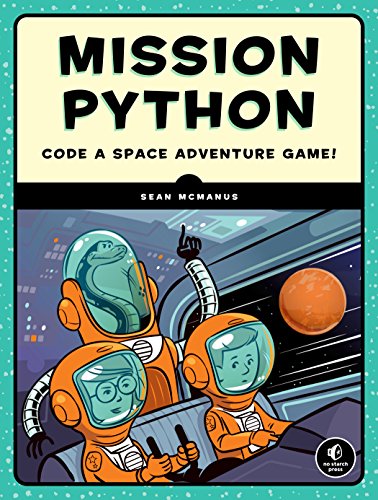
6. Mission Python: Code a Space Adventure Game! by Sean McManus
Recommended Age Range: 10+ years old
In this beginner-friendly, space adventure-themed coding guide, readers will learn how to build a completely functional computer game using the popular programming language, Python. As they go through the book, they’ll learn the fundamentals of text-based coding (like loops, strings, and lists) by completing exercises and mini-projects.
For instance, kids will have to make a “Spacewalk Simulator” and build an “Astronaut’s Safety Checklist” using their newly-minted Python skills.
Mission Python also introduces kids to Pygame Zero, a free resource that allows coders to add graphics and sound effects to their Python creations. There are also useful game-making tips and logic puzzle design recommendations scattered throughout the pages.
If followed correctly, the reader should be able to build Escape!, an exciting space-themed adventure game with a map to explore, logic puzzles to solve, and even special items to collect!
What’s more, kids can add on more features or program some elements differently depending on their creativity and understanding of the material!
Sean McManus’s Mission Python is a great book that works best when coding on a Raspberry Pi or a Microsoft Windows PC. Any 3D graphics and sound effects that the reader needs will be provided as a download.
Of all of the coding books for kids here, this book presents one of the longest single-game projects that teaches kids how to create a complete game from the ground up.

7. Lift-the-Flap Computers and Coding – IR by Rosie Dickins
Recommended Age Range: 8 – 10 years old
Of all the coding books for kids in this list, Lift-The-Flap Computer and Coding provides one of the best offline resources for learning key computer science concepts.
Described as an “interactive introduction to information and communication technology,” Lift-the-Flap Computer and Coding is a simple coding guide full of paper inserts and bright illustrations to keep readers engaged.
As the name suggests, kids can lift the flaps on each page to discover how computers and codes work (hence the “interactive” part of the description). Each flap is meant to represent different computer and code parts. It sort of emulates the reader peering inside a computer or a program to learn what makes them do what they do.
As a standalone guidebook, it doesn’t have any activities or projects for your child to do. This, we believe, makes it a good choice for kids who want to start coding but don’t want to commit to a specific scriptwriting program or coding language.
8. CoderDojo Nano: Building a Website: Create with Code
Recommended Age Range: 8 – 12 years old
Although this book was initially geared towards third graders, the concept and assignments inside can still be considered fairly challenging for older students. Therefore, we feel confident that children aged 8 to 12 years will find CoderDojo to be an excellent and engaging read.
CoderDojo is a self-titled “coding club” that encourages interacting with and learning from fellow coding enthusiasts. It’s currently a widely successful movement that encourages genuine enjoyment from programming, and it believes that knowledge about such skills should be freely accessible.
CoderDojo Nano: Building a Website is a perfect starting point to integrate oneself into this community—and, subsequently, the world of coding.
The book covers the fundamentals of web development for kids in the span of 96 pages. It expertly guides readers through the website-building process, one simple line at a time. It also covers related topics such as HTML, CSS Styling, and using Javascript for interactive features.
Although it uses a fair amount of technical jargon, there are enough fun, colorful illustrations to keep young readers engaged.

9. Ruby Wizardry: An Introduction to Programming for Kids by Eric Weinstein
Recommended Age Range: 9 – 12 years old
This is perhaps one of the few coding books for kids (if not the only book) on this list that uses an actual story to teach the basics of programming. Readers join the two adorable main characters, Ruben and Scarlet, as they adventure through a magical land. Along the way, they’re introduced to coding principles like strings, Boolean expressions, flows, loops, conditionals, and more.
The book is so named because it teaches programming using Ruby—a powerful, easy-to-learn programming language that is also suitable for kids.
The principles introduced may be a bit too technical for a younger audience, but kids aged 9 to 12 years old shouldn’t find it too challenging. And we guarantee they’ll fall in love with Ruben, Scarlet, and all the other colorful characters in the book – like the Off-White Knight and the Hacker Queen – as they make their way through the kingdom, fixing problems using code as they go along.
10. Hello Swift!: iOS App Programming for Kids and Other Beginners by Tanmay Bakshi
Recommended Age Range: 9+ years old
Hello Swift! by Tanmay Bakshi is a comprehensive, kid-friendly how-to guide to programming iOS Apps using the Swift language. What sets it apart from other guidebooks covering the same language is that it’s written from a child’s perspective.
This completely transforms what would have been a technical, jargon-heavy textbook into an approachable, well-illustrated primer that introduces readers to Swift programming concepts and, slowly but surely, gets them to develop their first (of many) fully functional iOS app!
The contents include simple, clear-cut explanations that are easy to understand and kid-friendly examples of coding fundamentals at work. There are also instructions for building dozens of small, bite-sized apps for the sake of practice and practical application.
At the end of the book, readers should be able to build two major apps: a birthday tracker app and a skateboarder game.
Want to know what else is cool about this book? The author was only 4 years old when he started coding. He launched his first-ever app at the age of nine. He’s currently the youngest IBM champion, Google Developer Expert, and TED Speaker.
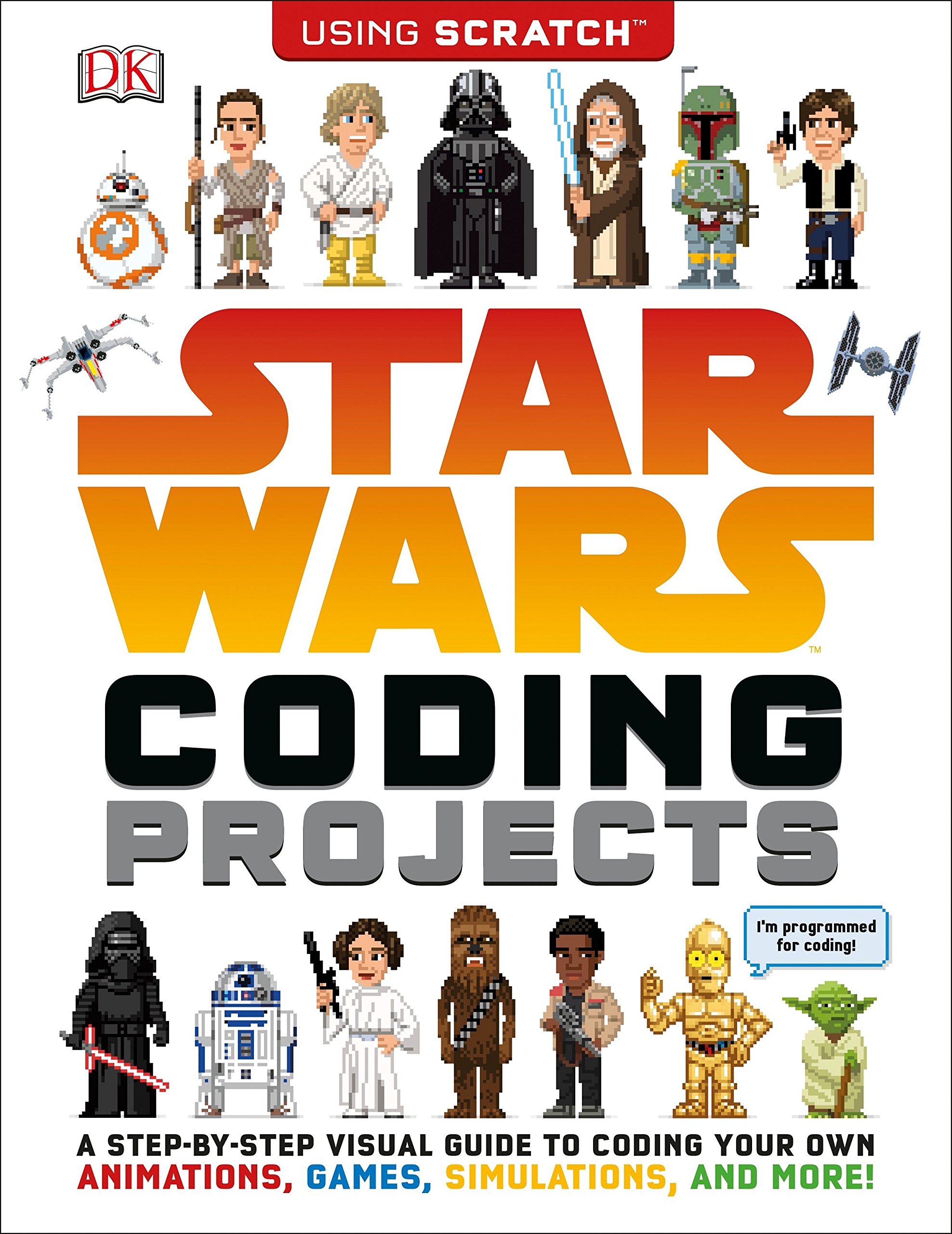
11. Star Wars Coding Projects: A Step-by-Step Visual Guide to Coding Your Own Animations, Games, Simulations, and More! by Jon Woodcock
Recommended Age Range: 8 – 12 years old
If your kids are obsessed with the events that happened “a long time ago in a galaxy far, far away,” then they’ll love this cute, colorfully illustrated guide to coding. Inspired by the Star Wars universe, Star Wars Coding Projects helps the reader master coding with Scratch by providing fun, space-fantasy-themed projects for them to tackle.
Guided by beloved characters such as Obi-Wan, C3PO, R2D2, and Master Yoda, kids will learn to “utilize the Force” as they create stories, interactive animations, and fun puzzle games using Scratch. They’ll be tasked with drawing their own Jedi sprite, designing their own spaceship, building their own jetpack, and more.
It’s an incredibly fun and immersive book that’s sure to engage avid fans and young coders alike by using popular terms and bright, adorable icons. No prior programming experience or knowledge is required!
12. Everything You Need to Ace Computer Science and Coding in One Big Fat Notebook: The Complete Middle School Study Guide by Workman Publishing, Grant Smith
Recommended Age Range: 11 – 14 years old
This book is part of the Big Fat Notebook series; a series of instructional and educational books built on the concept of borrowing notes from the smartest kid in the class. This leaves the reader with a pretty hefty guide full of key concepts, definitions, diagrams, and cute doodles about coding and computer science.
It’s split into eight units, starting with basic terminology and principles i.e., computing systems, algorithms, Boolean expressions, loops, events, procedures, etc. It then moves on to programming languages (specifically Scratch and Python) and ends with web development tools like HTML and CSS.
Unlike most of the books on this list, it’s more of an educational textbook rather than a workbook with projects and assignments. However, the language and illustrations manage to keep it engaging.
As with all Big Fat Notebook books, this book has been vetted by award-winning teachers (National and State Teacher of the Year). It has also been edited to meet Common Core State Standards and Next Generation Science Standards.
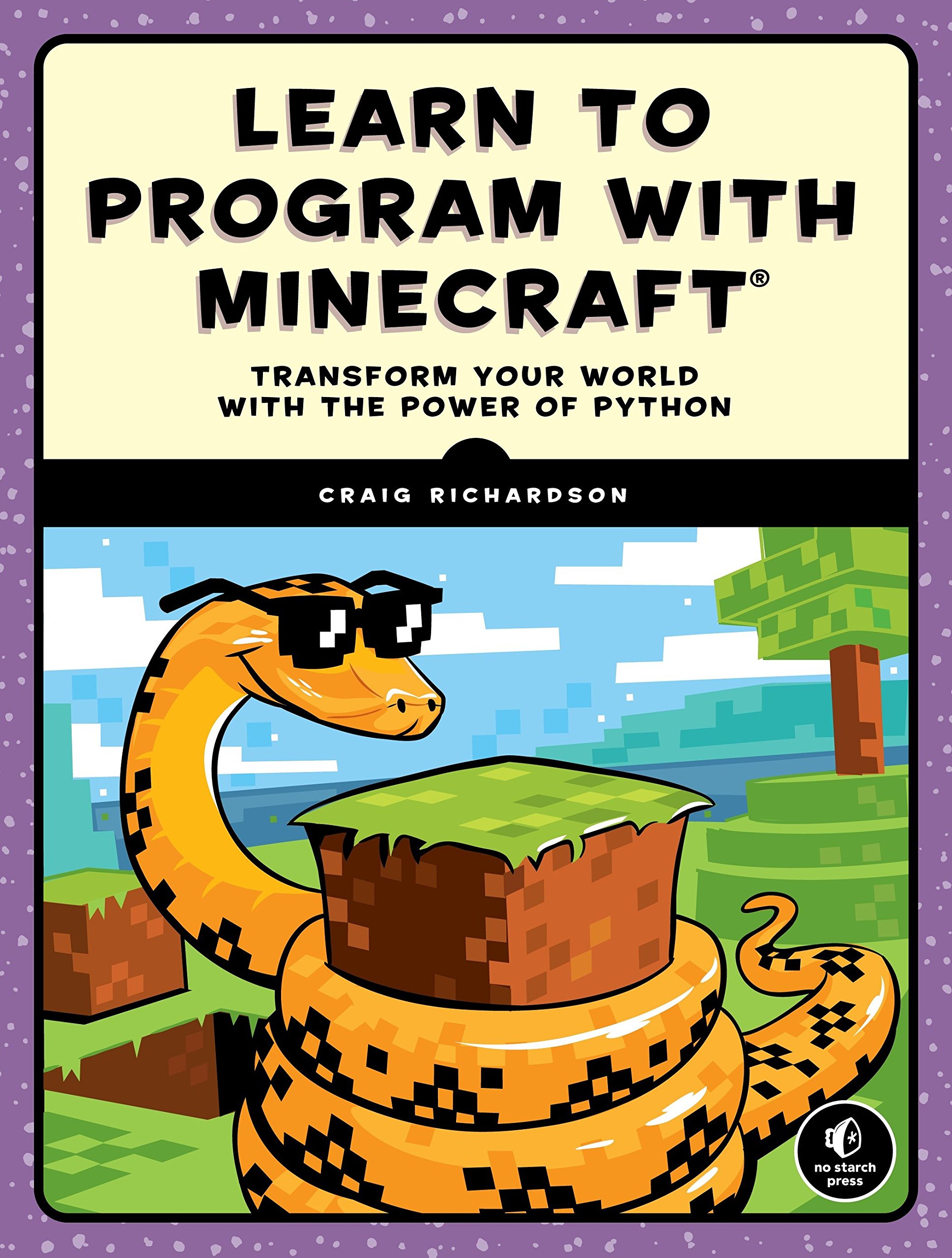
13. Learn to Program with Minecraft: Transform Your World with the Power of Python by Craig Richardson
Recommended Age Range: 10+ years old
We at CodaKid absolutely love Minecraft. It’s a 3D sandbox adventure/crafting game that is virtually limitless in terms of what you can build and how you can play. In fact, we use Minecraft as a platform to teach coding for kids by helping them create Minecraft mods (check out our Minecraft courses here!), which are basically really fun add-ons that you can design and program into the game to make it more unique to you.
Recommended Reading:
Learn to Program with Minecraft follows roughly the same concept. It introduces kids to the idea that they can expand and customize their Minecraft experience by using a text-based programming language like Python to craft modifications. And, yes, even first-time programmers can do this!
The book starts the reader out with some quick, easy-to-follow Python lessons, and then gradually transitions them over to creating actual mods using the skills they just learned. There are also additional projects to do – like creating mini-games or duplicating existing Minecraft builds – to help further develop these skills. Some examples from the book include automating a teleportation tour and making secret switch-activated passageways. How fun is that?
14. JavaScript for Kids: A Playful Introduction to Programming by Nick Morgan
Recommended Age Range: 10+ years old
JavaScript is often described as the “programming language of the internet.” Practically everything that has to do with the web – like website design and development – uses JavaScript. It’s the secret sauce behind interactive content.
Recommended Reading:
Written by a Twitter engineer and chock full of fun, cute illustrations, this book strikes the perfect balance between entertaining and educational. Readers start with the basics of programming before gradually progressing towards more advanced lessons (like drawing graphics to animating elements).
There are 17 chapters all in all, and each one has an appropriate project to accomplish to encourage practical application and skill development. It’s a hefty, comprehensive guide that offers an extensive deep dive into a staple coding language without overwhelming the reader.
It’s ideally targeted towards an older audience, but we’re sure kids as young as 10 years can read it and understand it with minimal issues.
At the end of JavaScript for Kids, readers should be able to build – or at least know how to build – their own online games and interactive web pages. It is a book worthy of inclusion in our Best Coding Books for Kids.
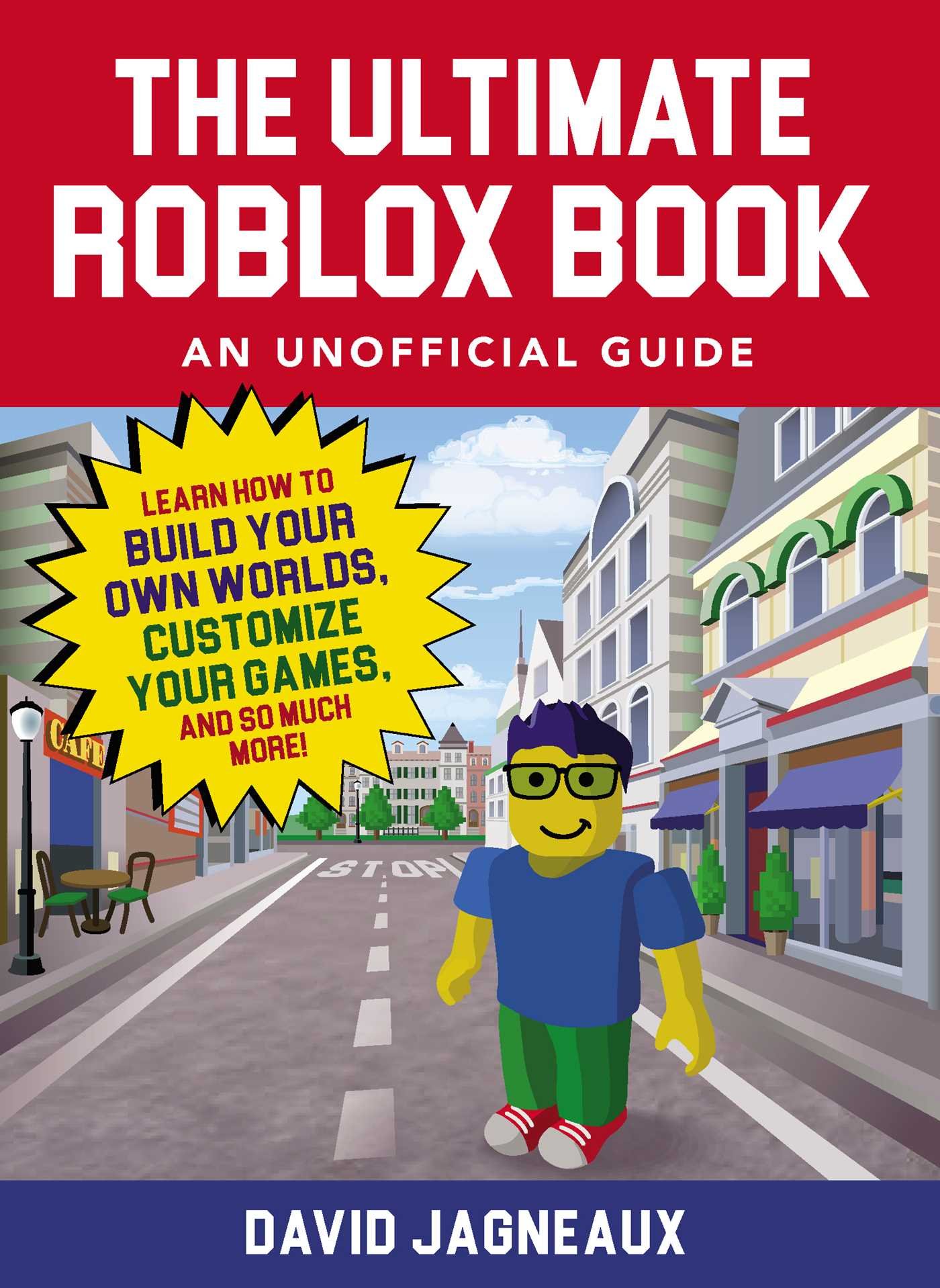
15. The Ultimate Roblox Book: An Unofficial Guide: Learn How to Build Your Own Worlds, Customize Your Games, and So Much More! by David Jagneaux
Recommended Age Range: 8 – 11 years old
Roblox is the world’s largest user-generated online gaming platform, hosting games for Roblox players made by Roblox players. It also happens to be another platform that we at CodaKid love to use to teach coding for kids. We even have a full course on it!
Roblox encourages users to create their own games – complete with worlds, characters, stories, controls, etc. – using Roblox’s own gaming engine (Roblox Studio). Then, when they deem their creations ready, they can host their game on the Roblox platform and share it with their friends, family, and other players. There are currently over 18 million games hosted on Roblox and about 32.6 million daily active users.
Recommended Reading:
If your child has an express interest in creating games, Roblox is the best place to start. And this Ultimate Roblox Book guide can help them get started. Full of advice, instructions, and expert tips, readers should have all the assistance they need to bring their game to life as they navigate Roblox Studio.
The book also includes programming basics for Lua—an object-oriented programming language that Roblox uses exclusively.
BONUS 16. DK Workbooks: Raspberry Pi Projects: An Introduction to the Raspberry Pi Computer by DK
Recommended Age Range: 7 – 11 years old
Raspberry Pi is an affordable, credit-card-sized computer that’s specifically designed to revolutionize the way kids approach coding (and all the computer skills that come with it). Its operating system allows kids to play games, control robots, and develop their own programming projects using Python or Scratch.
Indeed, Raspberry Pi is like a colorful, kid-friendly laptop computer—and it’s great for teaching kids how to code!
This workbook serves as a highly visual introduction to all that Raspberry Pi can do. There are easy-to-follow instructions, beautiful pixel art, and plenty of coding challenges and activities to keep young coders growing and learning. True, the requirements aren’t as straightforward as other books on this list (you’ll need a Raspberry Pi computer, an HDMI cable, a standard monitor, and more), but for kids who want to learn to program extensively? It definitely isn’t asking too much.
In the forty pages or so, readers will learn how to make their own music using Sonic Pi, code cool designs in Python, and create fully interactive games using Scratch.
Supporting STEM education initiatives, DK Workbooks: Raspberry Pi Projects aims to help kids think creatively and work collaboratively within the context of computer programming. Best of all, no prior coding experience or knowledge is required to enjoy the content!
Final Thoughts
Not all coding books for kids are made equal. Some can be too technical. Others could be too boring. And others could even end up providing wrong or outdated information! That being said, here’s what we look for in a coding book to consider it “good”:
- It should cover the basics if it’s aimed at kids with no experience
- It should focus on one coding language (with the exception of general computer science texts and publications)
- It should have an element that makes it engaging (a story, a unique theme, illustrations, etc.)
Here are our picks, again:
- Scratch Coding for Beginners: A Step-By-step Beginner’s Guide to Creating Video Games, Art, and Animation in Scratch 3.0
- The Official Scratch Jr Book: Help Your Kids Learn to Code
- Hello Ruby: Adventures in Coding
- Code Your Own Games! 20 Games to Create with Scratch
- Coding Projects in Python: A Step-by-Step Visual Guide to Creating Your Own Python Projects
- Mission Python: Code a Space Adventure Game!
- Life-the-Flap Computers and Coding – IR
- CoderDojo Nano: Building a Website: Create with Code
- Ruby Wizardry: An Introduction to Programming for Kids
- Hello Swift!: iOS App Programming for Kids and Other Beginners
- Star Wars Coding Projects: A Step-by-Step Visual Guide to Coding Your Own Animations, Games, Simulations, and More!
- Everything You Need to Ace Computer Science and Coding in One Big Fat Notebook
- Learn to Program with Minecraft: Transform Your World with the Power of Python
- JavaScript for Kids: A Playful Introduction to Programming
- The Ultimate Roblox Book: An Unofficial Guide
- DK Workbooks: Raspberry Pi Projects
We believe all these books provide solid, sustainable, and transferable knowledge. After all, it’s easy for children to learn skills. How much use it’ll be to them in the future depends on how well they develop it.








